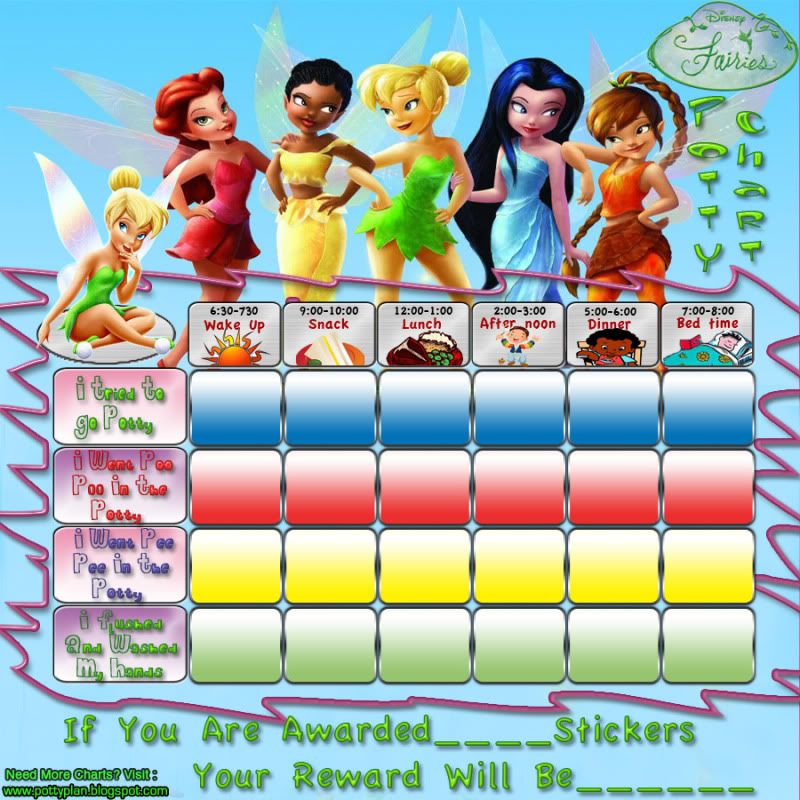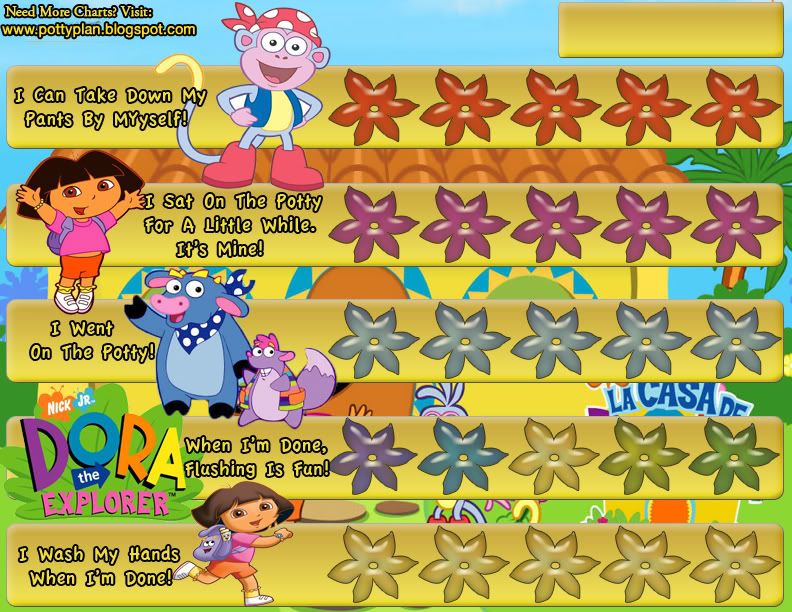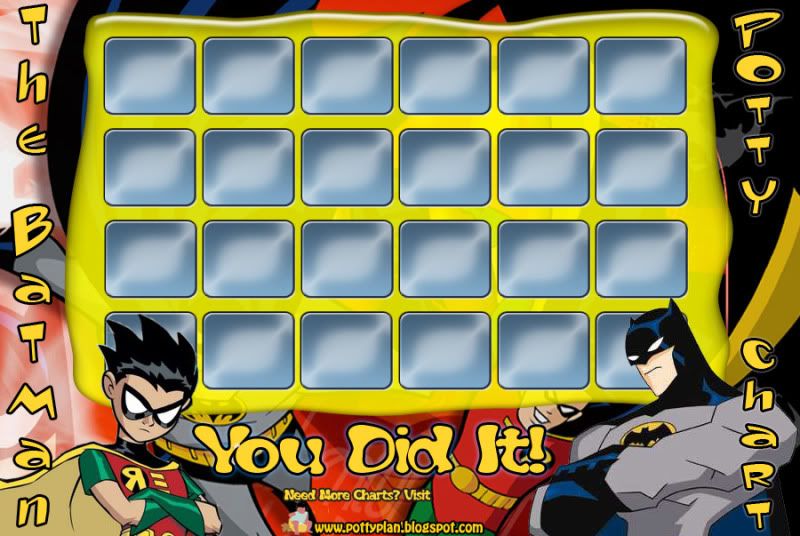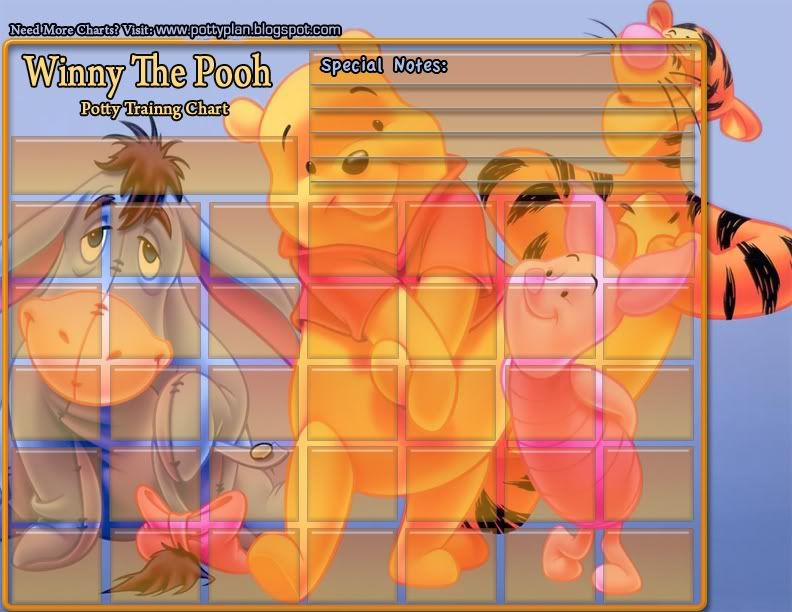The teachers next decision is whether to get your baby his own potty chair or seat, your child decision is to pick which one. Most babies prefer their own potty chair. How comfortable and willing would you be to preform on a spa sized toilet? child sized furniture make the development of any skill easier. Potty chairs securely contain babies, and with a potty chair your baby can plant his or her feet squarely on the floor, instead of dangling on the air on a adult toilet.
Preparing Your Child For Potty Training
At this point you have seen and examining your child's readiness signs and now your ready to start preparing for potty training. He or she is initiating potty behaviors: he wants to sit on his potty, doesn't like wearing diaper all the time, like the idea of doing thing the way Mommy and daddy does them. Follow your child's lead add a few potty routines to her daily schedule. Make simple connections between your child and the potty like, sit him on the potty chair after a nap if he has a dry diaper and after undressing for bath time. Do not assume at this point that he is ready to run the potty marathon, as he has no idea what pottying is. Do not expect anything from your child. Your building the stage and adding some of the scenery. You haven't written your script and are probably months away from rehearsal.
- Establish a positive potty training attitude
- Choose your potty words
- Include your child in bathroom routines
- Make friends with a potty chair or seat
- Talk about your child's diaper and potty routines
- Add a few potty books to your child's home library
Use this time to think about your child's temperament style. Watch your child's reaction to new stimulus your presenting. This is a stage for your child's future success make it appealing for him.
Building your personal potty plan
Show and tell - Capitalize on a prime developmental interest at this stage, the desire to imitate. Let your baby watch you go to the potty, explain what your doing. Girls naturally do better in the bathroom classroom with mommies, boys with daddies, but same sex potty training is not crucial.
Potty training dolls - Using a doll that wets can be a great tool to explain the process of potty training. Your child sees where the urine come from, removes the dolls diaper, places the doll on the potty chair, change the diaper and empties the potty chair bowl into the toilet and flushes the toilet. The combination of live model and dolls makes potty training easier.
Book learning - Besides live models and dolls models they are clever books that show picture and show a child in training. By the time your child has been exposed to all these models of potty trained character he should get the message "if they can do it, so can i".
The Weekend Training Camp - Most Parents prefer gradually training their child to potty over several weeks or months and progress at their baby's own rate. But some will rather plunge right into extensive training course in potty training during the weekend or during vacation time. A crash course does work for certain parent child pairs, but we don't advise this method for all babies. Some babies resist being puss out of diapers too quickly, but other welcome help to master their bodies. The step are the same as gradual method , just more concentrated.
Preliminaries
Select The Right Candidate - Only babies who are verbal, in a positive and receptive stage, are have a want to please attitude towards their trainer are suitable for this fast track potty training.
Concentrate On The Game - Approach this weekend of intensity relating with your child, not as a contest, but as a game. You will be with your baby constantly during the waking hours, watching every clue of body language that hits of bowel or bladder signals. This is a special training session not open to public.
Select The Right Season - Just as you don't schedule baseball game in mid winter, Don't set potty training day when your child is in a negative stage. Choose good mood weather and you can always call the game if bad mood prevails.
Schedule The Game Ahead Of Time - The day before, announce to your baby that tomorrow is a special day. "We are going to play a special game" over and over during that day.
Hold A Pregame Warm Up - Continue to emphasize that this is a special day and that you are going to do something special today. "We are going to play the game of no more diapers and use the potty like mommy and daddy do" Throw in like brother jim as an added incentive. Let your child catch your excitement.
Select The Right Uniform - Take off the diaper so your child can feel his body working, dress him in easy off clothing or no clothes at all. Show your baby the training pants, his or her special pants. Show him how to put on the special pants, How to push them down and pull them up. Publicize this event. Take picture and show them to your baby. Demonstrate the push down and pull up in front of a mirror. All the while keep a game like atmosphere. And if your baby periodically loses interest or protest, take time out for a snack break.
Hand Out The Equipment - Bring out special prizes. Like handing out party prizes, one by one unveil the tools of the trade: potty chair that you both pick out together and kept in a box until potty training day, dolls that wets and other props, and rewards stickers or other prizes.
Practice Drills
The Sitting Drill - Practice sitting on the potty chair " just like mommy and Daddy". Put the potty chair next to yours, sit together and chat for a while.
Instruction Manuals - As your child is sitting on his potty chair, read a picture book about potty training.
Get Your Signal Strait - Give your baby phrases such as "GO POTTY", "GO PEE PEE", "GO POO POO".
Getting On The Potty Chair And What To Do Drill - Let him watch you, ( for real or pretend ) an enthusiastic grunting sound can give him the idea.
A Practice Dummy - Go through a drill with dolls that wets explaining each step of having the doll wet , removing pants, changing the doll, and emptying the potty chair bowl into the toilet.
Teach Potty Hygiene - Bathroom are very fun places without obvious boundaries. Start with clear messages about how to use toilet paper, how many times to flush the toilet, and a fun hand washing habit. Sing a happy potty song to teach your child how long hand washing takes.
Practice Makes Perfect - Athletes and musicians know that repetition is essential to mastery. The beauty of concentrated "Potty Weekend" is that your creating the opportunity for repeated success. You are the time management expert for the weekend. Its up to you to take your child for potty breaks every two hours. Focus on the adventure of discovery and the satisfaction of success, " LOOK, YOU PEE ON THE POTTY!".
Play Begin
Meanwhile you have already scouted your start player and you know his moves, squatting tells you its BM time, clutching the front of the diaper or looking down there is about about to wet signal. watch for your child signals that he is ready to go to the potty. At first squat interject a "GO POTTY" as you direct him toward the potty chair, which is ether in the kitchen floor or in the bathroom next to your toilet. Shadow your baby all day issuing the reminder of "GO POTTY" each about to go signal. Keep his potty chair in a central location. By repetition of the association between baby's about to go signs and your "GO POTTY" cues, your baby makes the connection, " WHEN I GET THE URGE, I GOT TO POTTY".
Happy Ending
No matter what happens on this weekend, you hopefully had very personal, fun-filled time with your child. Tell your child how much you enjoyed been with him, If your child is ready gift warp his favorite underpants. If your child is still learning focus on the successes rather than failures.







